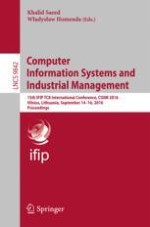2016 | OriginalPaper | Buchkapitel
Detection of Orbital Floor Fractures by Principal Component Analysis
verfasst von : Daniel Krpelik, Milan Jaros, Marta Jarosova, Petr Strakos, Tereza Buresova, Alena Vasatova, Tomas Karasek
Erschienen in: Computer Information Systems and Industrial Management
Aktivieren Sie unsere intelligente Suche, um passende Fachinhalte oder Patente zu finden.
Wählen Sie Textabschnitte aus um mit Künstlicher Intelligenz passenden Patente zu finden. powered by
Markieren Sie Textabschnitte, um KI-gestützt weitere passende Inhalte zu finden. powered by
